With the rapid evolution of photovoltaic cell and module technology, we frequently come across new terminologies and new products entering the market. The title of this article mentions several technologies that have recently made it possible to increase the efficiency and power of photovoltaic modules.
PERC-type monocrystalline cells (for which we use the short name mono-PERC) are an evolution of traditional monocrystalline cells, which for a long time coexisted with (already almost obsolete) polycrystalline cells.
With the aim of increasing the productivity of photovoltaic cell manufacturing, manufacturers developed a new sawing process that enabled the production of thinner wafers.
Wafers are sheets of silicon that are transformed into photovoltaic cells after some additional manufacturing processes, including doping the front surface, metallization and the application of an anti-reflective film. The production of thinner wafers has increased the number of cells that can be produced from the same ingot of crystalline silicon, consequently increasing cell manufacturing productivity.
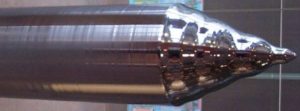
However, despite the increase in productivity, it was discovered that reducing cell thickness causes a loss of efficiency. This is linked to the fact that electrons and holes recombine more easily near the surface, reducing the number of charge carriers available for the formation of electric current.
An alternative to allow the manufacture of thinner photovoltaic cells, without compromising efficiency, was the application of additional layers of materials on the silicon wafer, in a process known as passivation.
The acronym PERC is an acronym for “Passivated Emitter Rear Cell, Passivated Emitter Rear Contact or Passivated Emitter and Rear Cell.” The literature has not yet decided on the correct meaning of the term PERC, but they all mean more or less the same thing: the cell has its rear part passivated by a dielectric material.
Passivation makes it possible to restore cell efficiency, even with reduced thickness, due to two passivating effects: a field effect, which repels electrons towards the interior of the cell, and an optical effect, which reflects solar rays like a mirror, improving the capture of solar radiation energy by the cell – in simple language, we can say that the sun's ray passes through the cell twice, on the way in and on the way back.

Learn more about PERC technology: PERC technology: the new generation of photovoltaic cells
We already understand what the name mono-PERC is about. Now let's move on to the next part of this article's title: the 210 mm dimension. The aforementioned dimension refers to the width of the silicon wafer used to manufacture the cells. Wafers have evolved over time, thanks to improvements in ingot manufacturing processes.
For some time parked at the 166 mm dimension, wafers are growing and the industry has recently started to adopt the 182 mm and 210 mm dimensions. 182 mm modules with 60 cells reach powers of up to around 450 W, while 72 cell modules reach close to 550 W. In turn, modules with 210 mm cells can already surpass the 600 W barrier.
Currently, there is a dispute in the market between modules with 182 mm and 210 mm cells. Some say that 182 mm modules provide the best relationship between size and result – which can be translated as an optimized LCOE (levelized cost of energy).
One of the arguments in favor of the 182 mm family is that very large modules increase labor costs during the construction of a solar plant and also favor the occurrence of accidents and module breakages. This subject is discussed in the article: Modules with 182 mm wafers are ideal for reducing LCOE in power plants.
Proponents of 210 mm modules argue that this family provides significant cost savings and constitutes the standard that should be adopted by the photovoltaic industry. The problem related to the use of very large wafers is that the increase in area weakens the cells, which become more prone to suffering microcracks. Likewise, modules manufactured with 210 mm cells also have increased dimensions, which can cause mechanical problems.
Aiming to reduce the dimensions of modules based on 210 mm cells, the alternative of manufacturing modules with cells cut into three parts emerged in the industry. This is the subject that completes the title of this article. Modules having 5 rows of 210 mm tripartite cells are already reaching the market, such as the product exemplified in the following figure.
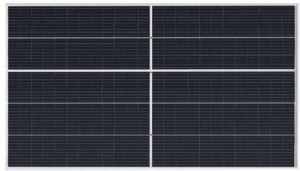
The division of cells into smaller parts is not new. This strategy has already been used by manufacturers to increase the efficiency of photovoltaic modules. Half-cell modules, with split cells, are already common on the market.
The article Half-cell photovoltaic modules explains how modules with cells cut in half work and why they are more efficient. The novelty brought by the tripartite cell modules is the use of the manufacturing strategy of half-cell modules with 210 mm cell thirds.
This makes it possible to manufacture modules with smaller dimensions than those with entire 210 mm cells. The power is reduced and with that we return to the power range around 450 W.
Manufacturing modules with tripartite cells is a strategy for manufacturers to surrender to the new 210 mm standard and still be able to produce modules with reduced dimensions, suitable for rooftop installations and microgeneration projects in general, preserving many of the characteristics of the old modules. based on 166 mm cells.
The following table presents the electrical characteristics of modules from the HI-KILO family from manufacturer Sunova, which employ 120 cellular elements (which are thirds of 210 mm cells). The table highlights the nominal powers (from 390 W to 410 W) and short-circuit currents (from around 10 A to just over 12 A). The dimensions of these modules, which can be found in the following table, are approximately 1.7 mx 1 m (or approximately 2 m2).
In contrast, 210 mm half-cell or full-cell modules have powers greater than 600 W, short-circuit current close to 20 A and dimensions of approximately 2.2 mx 1.3 m (area of approximately 2.8 m2).
In summary, the modules we refer to in the title of this article are products that, although manufactured from 210 mm wafers, preserve the electrical and mechanical characteristics of the old modules based on 166 mm wafers.
From a construction point of view, a module made with 210 mm three-part cells is in no way different from the half-cell module we already know. The big advantage in this case is that, while the industry prepares to convert its assembly lines to 182 mm and 210 mm cells, the consumer market will continue to have the option of using smaller modules.
It is good news to know that we will still have on the market the option of modules that preserve the dimensions and electrical characteristics of modules with powers of around 450 W, already well known and compatible with widely available inverter models.


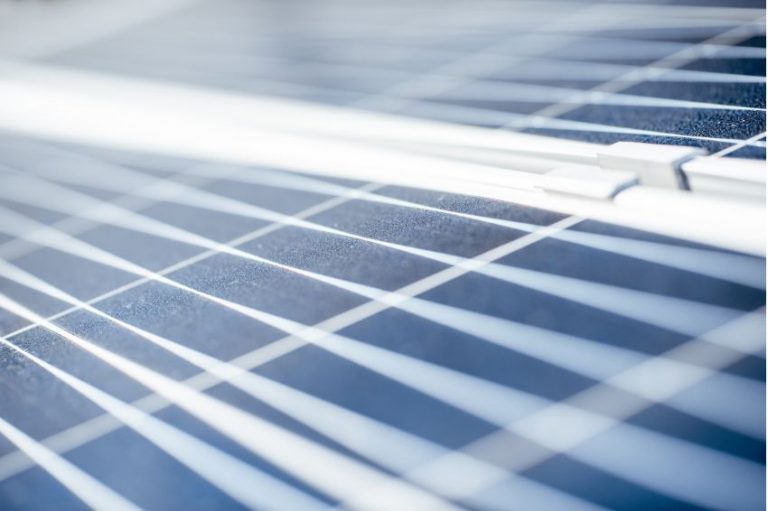


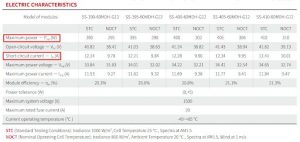
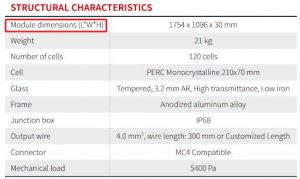












One Response
Very enlightening article, weighing well the pros and cons of using photovoltaic modules of increasingly higher powers, often without taking into account the parameters of the MPPT inputs of the inverters and without considering the increase in the mechanical fragility of the cells and, consequently, of the modules .